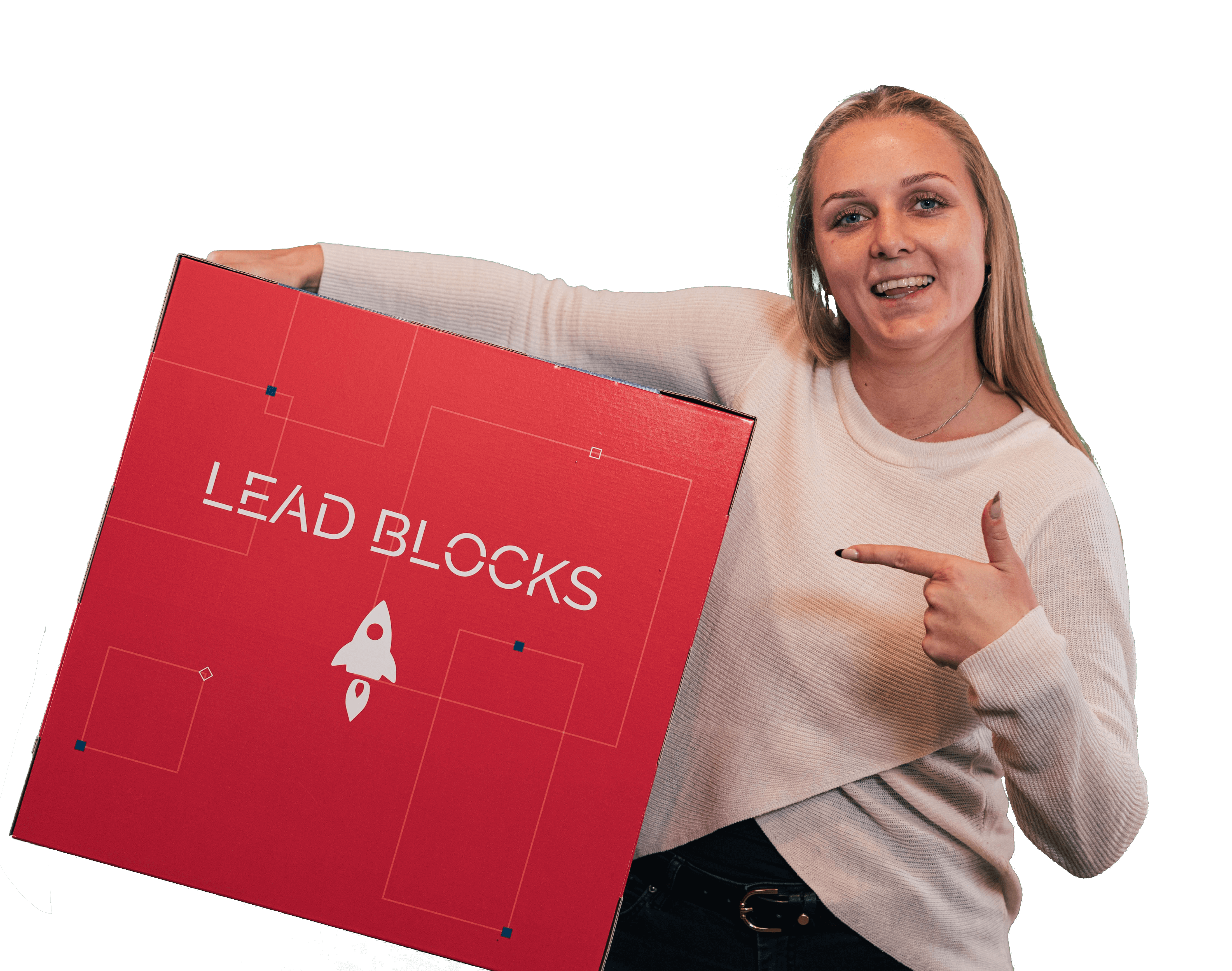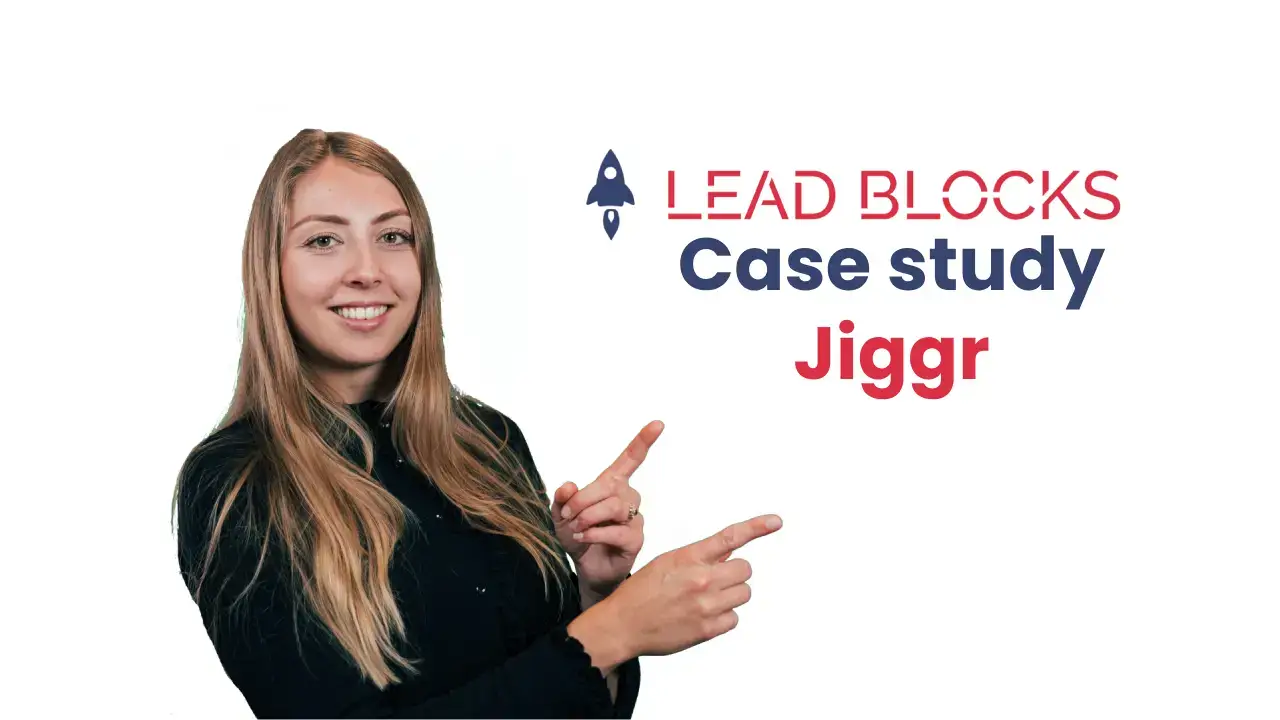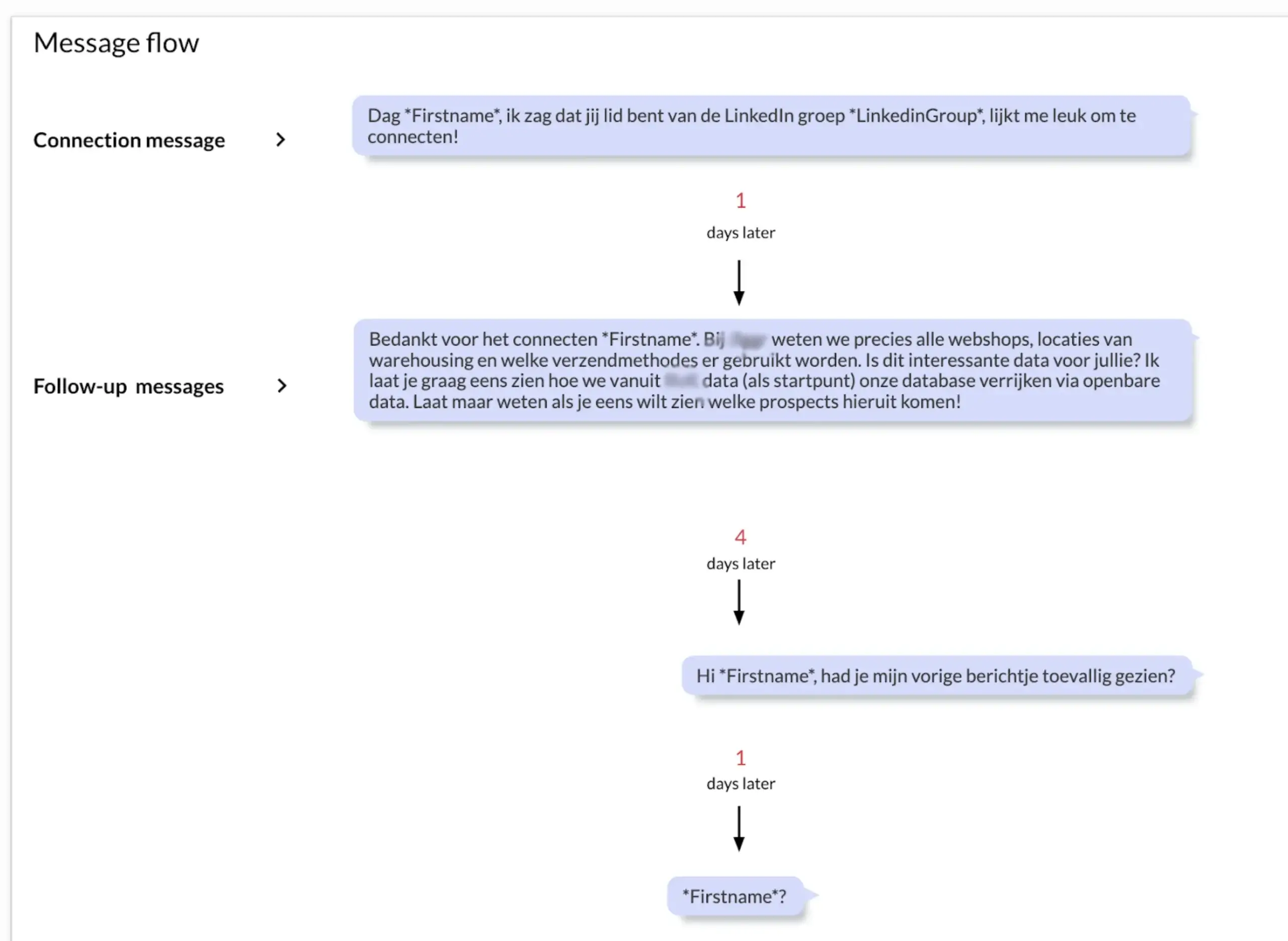The Secret of Selling: Top 7 Tips For The Perfect Sales Pitch

In today’s fast-paced world, neither salespeople nor prospects have the time to go through a pitch for an hour or more. A good sales pitch lasts a few minutes and has a straightforward structure. It discusses the client’s problem, potential solutions, and the steps to move forward.
Every sales agent should understand how to build and deliver a great sales pitch to keep the prospect engaged and interested in their offer.
A poorly put-together content, a lack of a personal touch, or delivery that falls short of the expectations of your lead are all possible reasons why selling online may have been difficult for you.
A good pitch and delivery will move your prospects along the sales funnel. You can take several steps to improve your pitch to fill your pipeline with high-quality leads. Read on to get B2B sales pitch ideas that will guide you in achieving the maximum conversion rates.
What is a Sales Pitch?
The sales pitch is a salesperson’s presentation intended to persuade a prospect to proceed with the sales process. Instead of persuading a prospect to buy your products or services, the sales pitch should demonstrate that you have a solution to their issues.
If there’s one thing every salesperson dreads, it is to discover that after putting in a lot of time and effort to create the “perfect” B2B sales pitch, the client isn’t ready to move forward. Of course, no one wants to be met with rejection after putting so much effort into anything.
The difference in how a salesperson puts forward his pitch while creating urgency and highlighting deadlines determines if they are hard selling or soft selling. Let us see what these mean and which one works best in today’s B2B world.

Hard Selling vs. Soft Selling
A hard sell is intended to persuade a customer to purchase a product or service immediately. These are some characteristics of a hard sell.
- A hard sell is a high-pressure sales strategy. It can even be seen as aggressive.
- Hard selling sometimes feels like the salespersons may try to misinform, conceal information, or even deceive customers.
- Hard selling is a direct strategy where a salesperson attempts to seal the transaction as quickly as possible.
On the other hand, soft selling is a completely different approach that emphasis the quality of your relationship with your prospects above the speed with which you can close the deal.
- Soft selling is a sales technique that relies on delicate persuasion and conversational language.
- A soft sell strategy aims to provide the prospect a low-pressure sales experience.
- Sales reps that use the soft sell strategy focus more on creating relationships with their prospects to gain their trust.
Making a genuine personal connection with leads is crucial in today’s environment of continual digital contact and never-ending social selling. Sales urgency works by tapping on basic human experiences like procrastination and the fear of losing out to inspire prospects to take action.
While going for the hard sell might help certain salespeople win more transactions faster, it isn’t always the best strategy. A hard sell may be seen as “aggressive” by certain clients and this could harm your brand.
Everyone knows that pushy sales guy that repeatedly contacts prospects and asks for the sale without first delivering value or allowing the prospect any time to think about it. Many prospects are turned off by this sort of conduct.
Tips For a Killer Sales Pitch
Do Your Research
First, find out as much as you can about the prospect’s existing problems and viewpoints. This will allow you to assess if the product or service you’re selling is a suitable fit and provide the best possible suggestion.
Take time to complete proper market research before approaching a prospect who operates a coworking space, for example, if you specialize in B2B beverage dispenser sales and generally sell to corporate offices. Learn about the particular issues that a coworking space has so you can learn their objectives and concerns.
Personalize Each Lead’s Content
A strong sales pitch begins well before the presentation itself. It all starts with an extensive study of the customer, their wants, and their problems. Demonstrate to the prospect that you have taken the time to learn about them and how you can become a valuable strategic partner. You must show your worth before they will trust you with their business.
Find out about the prospect’s business concerns and problems and how they relate to what you’re giving to solve them and develop a productive and trusting connection. After that, sales professionals should carefully design tailored pitches for each prospect or audience. Each sales pitch is a unique presentation tailored to the specific prospect.
Present The Problem
A strong sales pitch should focus on the client’s requirements rather than the product or service. Salespeople should show that they understand the challenges that the prospect is facing. Your message should capture the client’s attention and demonstrate that you are aware of the current situation and can provide an effective solution.
Remember, the first impressions you create during a sales pitch are crucial, and they might determine the destiny of your partnership. Online sales is much more difficult because you can not change the words you have sent. You can not change the tone of the message or how the lead interprets it.
Make The Value Proposition Clear
When writing a sales pitch, remember to concentrate on the product’s benefits rather than its features. The prospect may not be interested in your product, but they are interested in how it may help them grow their business. They want to know what they’ll get from adopting your services, whether it’s more income, lower costs, efficiency, or more.
Try to imagine yourself in the prospect’s position and develop reasons they should be interested in your product or service.
Offer a Solution
If the pitch was delivered right, your prospect would be eager to learn more about the solutions you provide at this point. Describe how it will alleviate their discomfort and resolve their problems.
Describe what you can do for them in a few words, but don’t give them too much information. The more information you give upfront, the less chance they want to speak any further.
Use Storytelling
A compelling story should be included in every sales proposal. The prospect may be the primary character in the tale, moving from point A to point B. The prospect will view the current state of the business and get a sense of where it might go in the future. This alone could motivate your prospect to move ahead with you.
Prospects might picture themselves as active participants in the story, bringing them one step closer to their business goals. Make sure your story centers on the benefits you can provide. You might showcase some of the previous successful results that helped you get clients.
Give Time For Your Prospect to Make a decision
Allow your prospect to consider whether your offering is the best option for them as they decide. Finally, while using a soft-sell strategy, your prospect should only get relevant information from you that will help make an informed decision rather than feeling compelled to buy.
Practice this by taking a step back while they consider their options, allowing them to take ownership of their decision. Here’s some quality piece of advice for our teaming readers in sales:
give your lead at least 48 hours before checking in again. When you do get in touch, offer to address any queries that may have arisen during that time or provide relevant documents to assist them in their decision.
Keep the following in mind:
- Make it brief
- Strike a good blend of professionalism and warmth.
- Be confident
- Use simple language
- Create some sense of urgency
- Use realistic deadlines

At What Point Should You Sell on LinkedIn?
It is important to balance being pushy and creating sales urgency. One of the most typical pitch mistakes salespersons make on LinkedIn is putting too much emphasis on the deadline too soon. When used too soon, the sense of urgency produced might be insincere or even gimmicky.
Avoiding the desperate salesperson impression and concentrating on subtly progressing with the plan could help you gain credibility with leads.
Before selling and implementing the urgency strategy on your LinkedIn lead, you need to know where they are in the sales funnel. Knowing what type of lead you are dealing with will help you understand how best to engage with them. To better understand the types of lead and where your lead falls presently, check out our guide on “Cold vs. Warm Leads.”
Searching for and prepping your lead for a sale can be tiresome. Sometimes you may put forward your sales pitch prematurely. This backfires, and you lose a lead that could have been a potential customer. LeadBlocks helps eliminate such errors by adequately warming up your leads.
We take them through the entire process, from initial connection, cold messages, and follow-ups – and then bring them to the point of sale. Now you can easily close the deal with your killer pitch. Business has never been better! Schedule a call today; we will be delighted to get you started.
—
Read this blog in Dutch



+31 (0)85 06 04 797
Case study Jiggr - campagne pakket leveranciers met LI group

Hoe LeadBlocks de leadflow optimaliseerde voor een dataleverancier in de logistieke sector
Een verhoging van de LinkedIn leadgeneratie met 30%. Dit is een uitdaging waar wij van houden. Het bedrijf in kwestie verkoopt bedrijfsdata aan andere bedrijven. De focus ligt op CEO’s, sales directeuren en marketeers van diverse organisaties, zowel MKB als de allergrootste enterprises. De afdeling sales bestaat uit drie jonge, enthousiaste medewerkers. Elke dag zijn ze druk aan het bellen om koude leads op te warmen en al opgewarmde leads tevreden te houden.
Met de ambitie van een verhoging van 30% in het achterhoofd, zijn we aan de slag gegaan met de outreach vanuit interessante LinkedIn profielen van drie verschillende collega’s.
Wat was de uitdaging?
Voordat we aan de slag zijn gegaan, hebben we naar de uitdagingen van het bedrijf gekeken. Je kunt wel met oplossingen komen, maar wanneer je de oorzaak van ‘het probleem’ niet kent, is het alsof je een pleister op een bloedende wond plakt.
Al snel bleek dat het voor het salesteam lastig is om consistente en kwalitatieve leads te genereren via de traditionele kanalen.
Terwijl de ambitie juist is om een efficiënte en warme aanpak te hebben, die tot meer (warme) leads leidt. Ze kunnen dus niet met teveel man aan een deal werken.
Wij houden van uitdagingen, dat geldt eveneens voor dit bedrijf. En dat is maar goed ook. Ze hebben namelijk te maken met ontzettend hoge targets. Er zijn nieuwe investeerders ingestapt en zij willen - logisch - waar voor hun geld. Los daarvan ligt de lat hoog. Het bedrijf moet eigenlijk een groei van 150% doormaken om het target te halen. Daarom zijn ze in gesprek gegaan met leadgeneratie bedrijven die outreach kunnen doen, zowel op LinkedIn als op de mail. En daar komen wij om de hoek kijken.

Zo hebben wij het aangepakt
In deze case hebben we voor een aanpak in vier stappen gekozen:
1. Data scraping voor gerichte prospects en een hoog DMU niveau voor hoge kwaliteit leads
Bij het genereren van meer leads is het essentieel dat je je doelgroep kent en weet waar de interesses liggen. Hierdoor kun je de doelgroep met de juiste content ‘verwennen’. In dit geval zijn we aan de slag gegaan met een submark waar de klant al succes mee boekte, in de logistieke sector. We hebben alle logistieke organisaties in Nederland in een database gezet. Daarna hebben we de CEO’s, marketeers en sales mensen ‘gescraped’ en ze aan de database toegevoegd. Vervolgens hebben we gekeken hoe en waar deze mensen actief zijn, bijvoorbeeld in welke groepen op LinkedIn en of ze van baan zijn gewisseld. Zo hebben we een duidelijk beeld van de prospects gekregen en konden we door naar stap twee.
2. LinkedIn leadgeneratie opzetten
Het opzetten van de LinkedIn leadgeneratie is het leukste. Als eerste hebben we de vraag gesteld wat de triggers zijn van de doelgroep. Waarom willen ze bedrijfsdata en waar willen ze dit voor gebruiken? Zijn er eventuele irritaties die spelen? En welke acties gaan daaraan vooraf of zijn een vervolg hierop?
Daarna zijn we in ons archief gedoken. Of beter gezegd, het brede scala aan berichten die we in het verleden hebben gemaakt. Hiervan weten we wat de gemiddelde connectie-ratio’s en reply-ratio's zijn. We hebben templates gemaakt om de berichten in te vullen. Deze berichten zijn overigens geautomatiseerd, maar wel persoonlijk gemaakt. Een prospect zien we niet als een nummer, maar als een unieke (toekomstige) klant.
Tot slot hebben we ChatGPT om hulp gevraagd. Niet om te schrijven, maar als externe adviseur. ChatGPT heeft ons geholpen de tekststructuur te optimaliseren en pijnpunten van de doelgroep te koppelen aan de USP’s van de klant (het databedrijf), om zo een rakend berichtje te maken.
3. Optimalisatie van LinkedIn-profiel voor betere zichtbaarheid
Stel jezelf eens de vraag welk LinkedIn-profiel je graag wilt bekijken. Is dat er één waar veel aandacht aan is besteed of een profiel met alleen een naam en een functie? We weten het antwoord wel. Het profiel is zeer belangrijk om beter zichtbaar te worden op LinkedIn.
Bij dit bedrijf konden we met drie profielen aan de slag. Omdat de focus op sales professionals, marketing managers en CEO’s ligt, hebben we de profielen ook zo ingericht. Profiel één had een CEO persona, het tweede profiel was een sales professional en profiel nummer drie was meer gericht op marketing.
Daarnaast hebben we alle profielen iets verhoogd door senioriteit in de titel toe te voegen. Jammer genoeg hadden ze geen vrouwelijk profiel. Je ziet dat wanneer je de focus op sales legt, het overgrote deel van de bezoekers man is. Benaderen vanuit een vrouwelijk profiel is dan ook de beste keuze. En zo zijn er meer ‘good to knows’, ‘do’s en don’ts’ en man/vrouw-benaderingen.
4. Actief chatten en opvolgen van warme leads
Als we eenmaal bezig zijn, willen we in de flow blijven. De klant had gelukkig hetzelfde gevoel en wilde de leads zo snel mogelijk doorzetten, zodat het salesteam de leads kon gaan opwarmen. Via de outreach hebben we eerst gekeken naar iedereen die een klein beetje positief was en die direct doorgezet. Als ze niet reageerden, maar wel een telefoonnummer hadden, werden ze direct doorgezet naar het sales team en gebeld.
Inhoudelijke chats heeft de klant nagebeld en wanneer iemand positief was en aangaf open te staan voor een gesprek, hebben we een meeting booking link gestuurd. Werd daar binnen twee dagen niet op gereageerd, dan ging de lead terug naar de klant, zodat het sales team het nog een keer op kon pakken. We doen er altijd alles aan om zoveel mogelijk leads te genereren.
Negatieve leads hebben we juist niet doorgezet. Het is namelijk makkelijker om iemand die neutraal is te benaderen voor een afspraak dan iemand die een negatief gevoel heeft.

Wat waren de uitdagingen en learnings?
Een van de uitdagingen was data scrapen, specifiek om dit op de juiste manier te doen én te verwerken. Dat zit zo. De limieten op LinkedIn zijn laag, vandaar dat je extra aandacht moet besteden aan data scraping. Veel partijen richten hun LinkedIn-sales in op basis van de resultaten van zoekopdrachten. Prima om te beginnen, maar wij gaan nog een stapje verder. Wij filteren minimaal 20 procent van de data eruit. Op die manier kan de klant er nog meer uithalen.
Een voorbeeld: LinkedIn vindt dat een assistent-CEO ook bij de CEO hoort. Stel dat je target op een bepaald bedrijf, maar er werkt daar een marketeer die CEO is van een tweedehands Nike-webshop, dan wil je die natuurlijk niet targetten. Deze cruciale stappen zetten wij voor je. Handig, omdat je maar 20 connectieverzoeken per dag mag versturen.
Aan het begin van het traject moesten we ons plan bijstellen. Eerst hebben we alleen de warme leads doorgezet. Al vrij snel merkten we echter dat dit niet genoeg was voor de klant. De klant had een actief en kundig belteam. Ook bij lauwere leads hadden ze een goed haakje om de afspraak vrij snel in te koppen. Voor deze klant gold dus dat ze vooral geholpen waren met lauwere leads en niet met warme.
Daarnaast is het belangrijk dat je niet meteen gaat verkopen. LinkedIn is daar sowieso niet het beste medium voor. Het gaat veel meer om netwerken en een voet tussen de deur krijgen. Mensen willen niet iets aangesmeerd krijgen, maar dat hun uitdagingen worden opgelost. Bij je eerste telefoongesprek doe je dan ook geen verkoop van een product of dienst. Je verkoop is een afspraak maken. De beslisser maak je dus duidelijk waarom het waardevol is om in gesprek te gaan.

Dan het belangrijkste, de resultaten
Successen vieren we altijd met taart. De plaatselijke patisserie was ook blij met deze campagne. Dit waren de resultaten van de campagne:
- De connectie rate was 42%, met een reply rate van nog eens 57%, terwijl dit gemiddeld tussen de 30 en 50% zit. Na drie weken leadgeneratie hadden we twaalf directe en indirecte afspraken. In totaal hebben we 293 mensen benaderd. 17% van hen reageerde positief. Een mooie score!
- In de cijfers hierboven hebben we alleen de leads meegenomen die al positief waren op de chat. Met alle mensen die lauw gebeld zijn en/of niet hadden gereageerd op de chat, kan nog steeds een afspraak zijn ingepland.
- De leadgeneratie was niet alleen zinvol voor de warme leads, maar ook als source voor het belteam. Ze waren minder tijd kwijt in de voorbereiding van de prospects en hadden een duidelijk haakje tijdens het bellen. 30% van iedereen die het team te spreken krijgt, werd een demo.

Conclusie
LinkedIn kan een perfect platform zijn om meer leads te genereren, zeker als je dit op de juiste manier doet. Slaag je daarin, dan heb je een effectieve manier te pakken om je leads te bereiken en warm te maken. Cruciaal daarbij is het doorlopen van de juiste stappen:
- De goede data
- Data op een slimme manier gebruiken
- Flinke personalisatie
- Peer-to-peer
- Lauwe leads bellen is zeer zinnig

